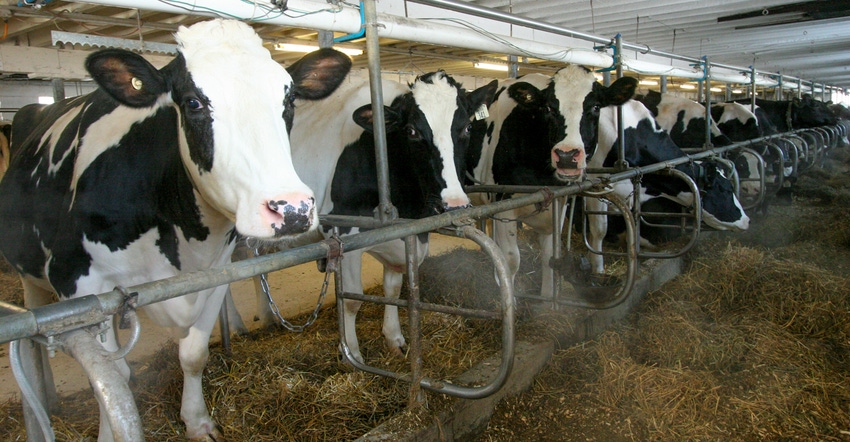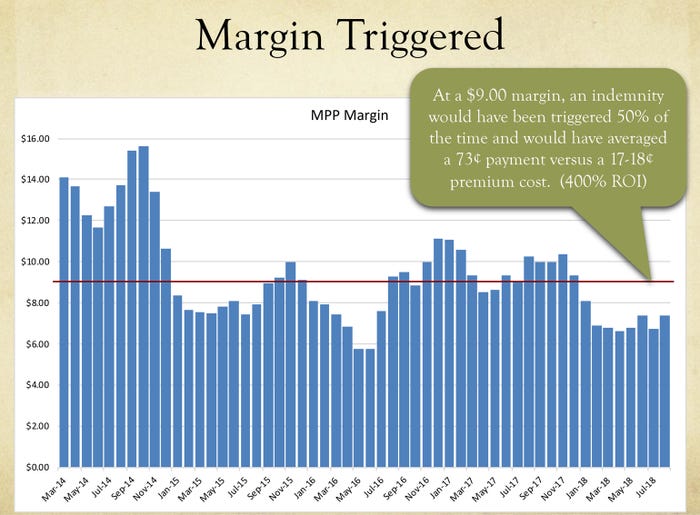October 11, 2018

2018 is winding down, and we still don’t have a farm bill. A farm bill is the primary agricultural and food policy tool of the federal government, and a new one is passed about every five years.
On June 21, the House narrowly passed its version of a farm bill, and on June 27, the Senate voted to do the same. A conference committee was first convened Sept. 5 to iron out the differences between the two versions, but a final bill is not ready to be passed out of committee at this time. Changes to the Supplemental Nutrition Assistance Program are the real stumbling block. The House wants to strengthen the work requirements for SNAP recipients. While lawmakers were hopeful they would approve a farm bill in September, the current farm bill expired Sept. 30.
According to Mark Stephenson, director of dairy policy analysis at University of Wisconsin-Madison, there are likely to be changes to the Margin Protection Program for Dairy.
“The 2014 Farm Bill introduced the MPP as a means of harmonizing the dairy program with the crops programs,” Stephenson explained to an audience of dairy farmers during a seminar held Oct. 3 at World Dairy Expo. “However, the initial version of the farm bill did not provide dairy producers with payments when farms felt that payments should have been made. In the first years of the program, producers paid more in premiums than they received in indemnities.”
According to Stephenson, the revised program will be built on a similar structure, but the name of the program will be changed.
“Both the House and Senate removed the 25% of historic coverage minimum, which would allow larger farms to purchase a small percentage at Tier 1 premium prices,” Stephenson explained. “The largest margin available would be raised from $8 to $9 [per cwt].”
The cost of Tier 1 premiums will also be lowered, he added, and the $9 coverage will be available under the House version at 17 cents per cwt or the Senate version at 18 cents per cwt. Stephenson said if the new MPP had been in place during the past five years, the margin would have been below $9 about half of the time since March 2014.

400% ROI
“In fact, program payments at the $9 level would have averaged 73 cents [per cwt] for a 17-cents-to-18-cents Tier 1 premium cost,” Stephenson said. “That’s a pretty minimal cost for a 400% return on investment.”
The Tier 1 price, Stephenson noted, is for the first 4 million pounds of milk a farm sells.
That covers the smaller and medium-size farms, but larger farms will have to pay a Tier II price if they sell more than 4 million pounds of milk per year. According to Stephenson, the Tier II price in the House version is $1.36 per cwt, while the Senate version it is $1.68.
No matter which version Congress decides on, Stephenson says it’s a no-brainer for dairy farmers who sell 4 million pounds of milk or less per year to sign up for the new MPP.
“Even if it is a five-year commitment, a 17-cent or 18-cent investment for a 73-cent payback looks pretty good on the first 4 million pounds of production history,” he said. “If you have a larger dairy, this may not be as good.”
The bottom line is the government is finally offering a real safety net, and small and medium-size dairy farms would be smart to take advantage of the program and sign up.
Stephenson said in addition to signing up for the MPP, dairy farmers should also sign up for the Dairy Revenue Protection program now being offered by the American Farm Bureau. Dairy RP will be managed similarly to crop insurance and is available through authorized crop insurance agents.
When will the farm bill be finalized?
“This is normal. We seldom get a farm bill done on time,” Stephenson said. “I think a continuing resolution and ultimate passage in January is more likely.”
Comments? Email [email protected].
You May Also Like




